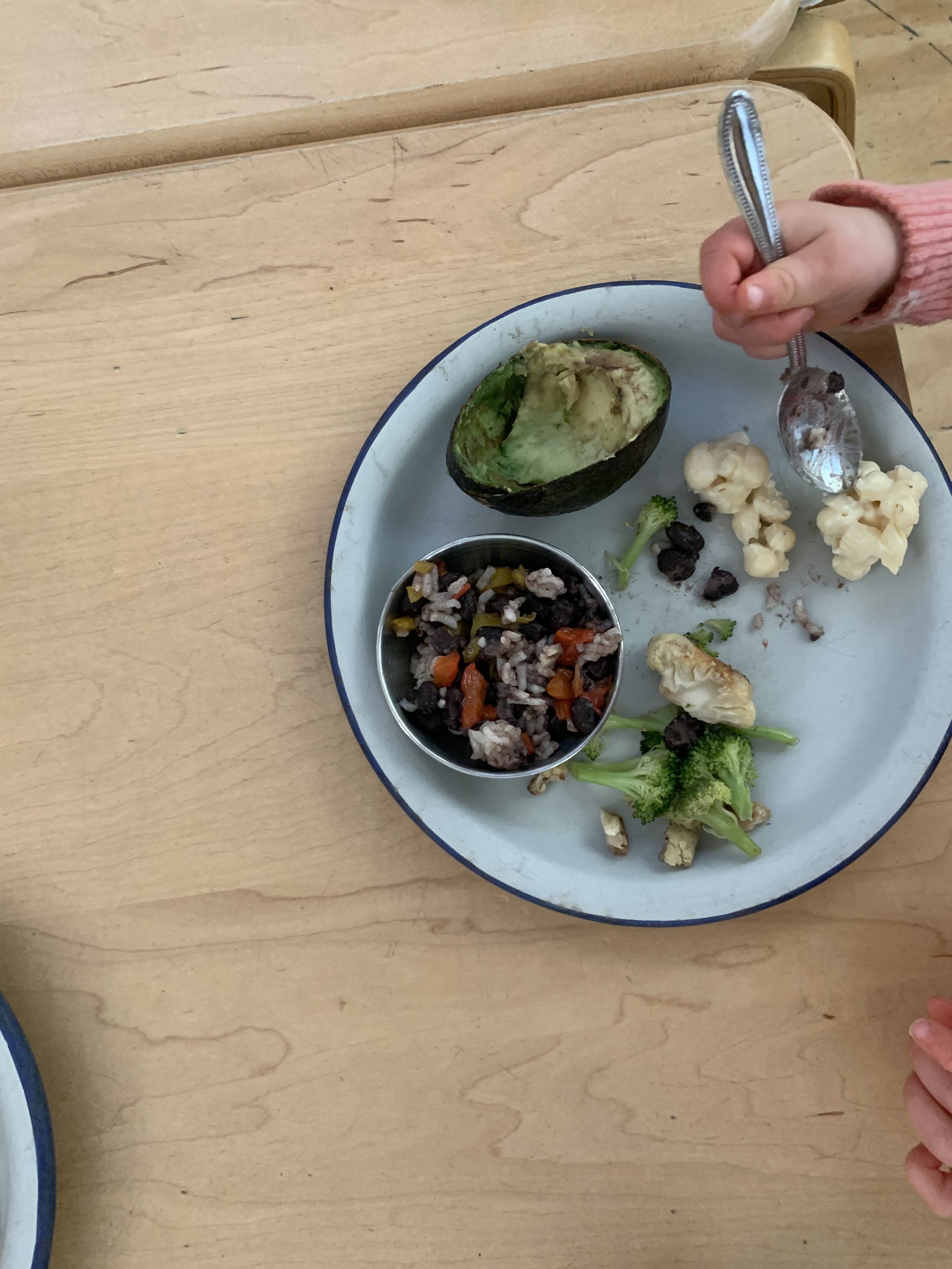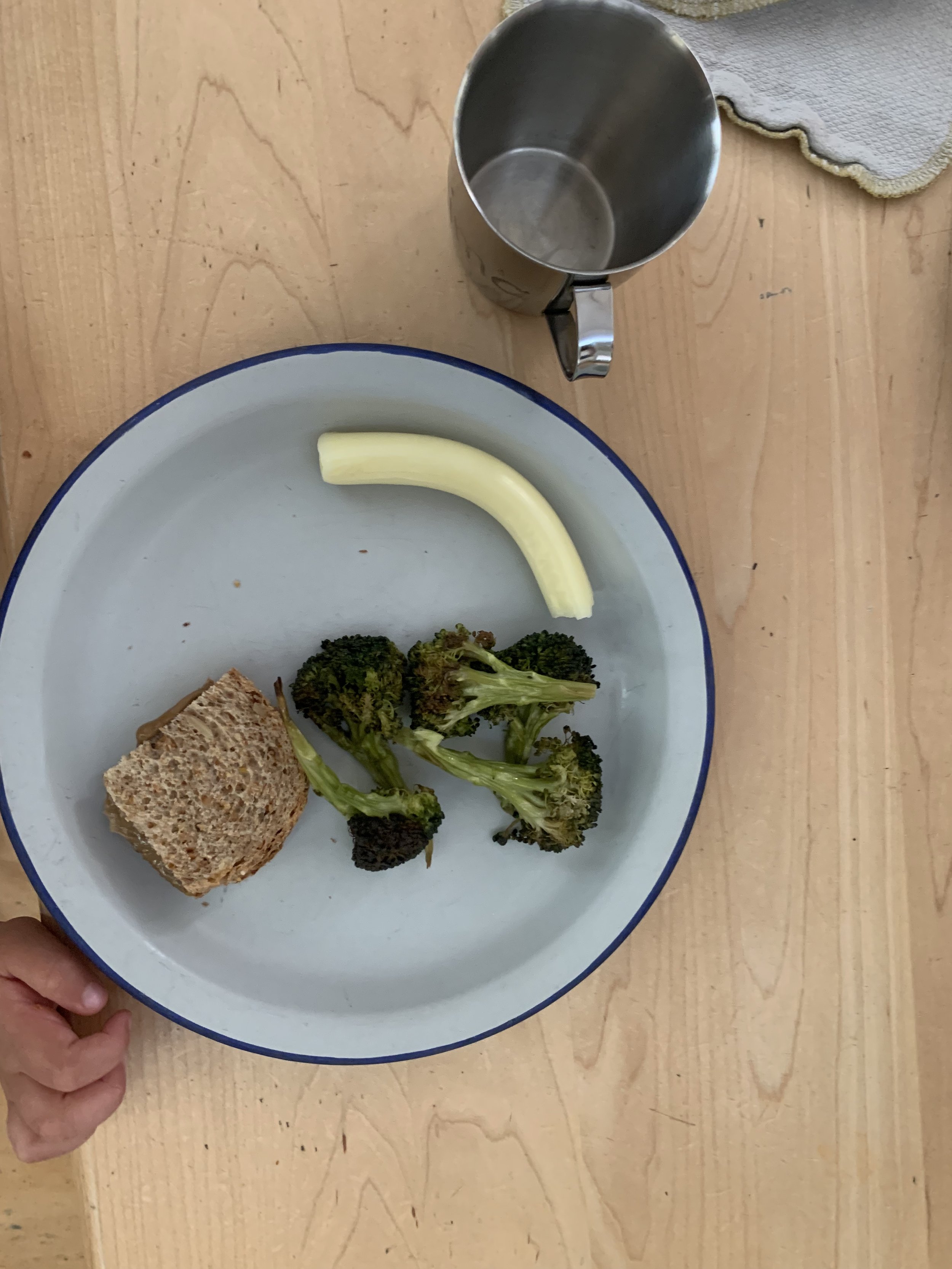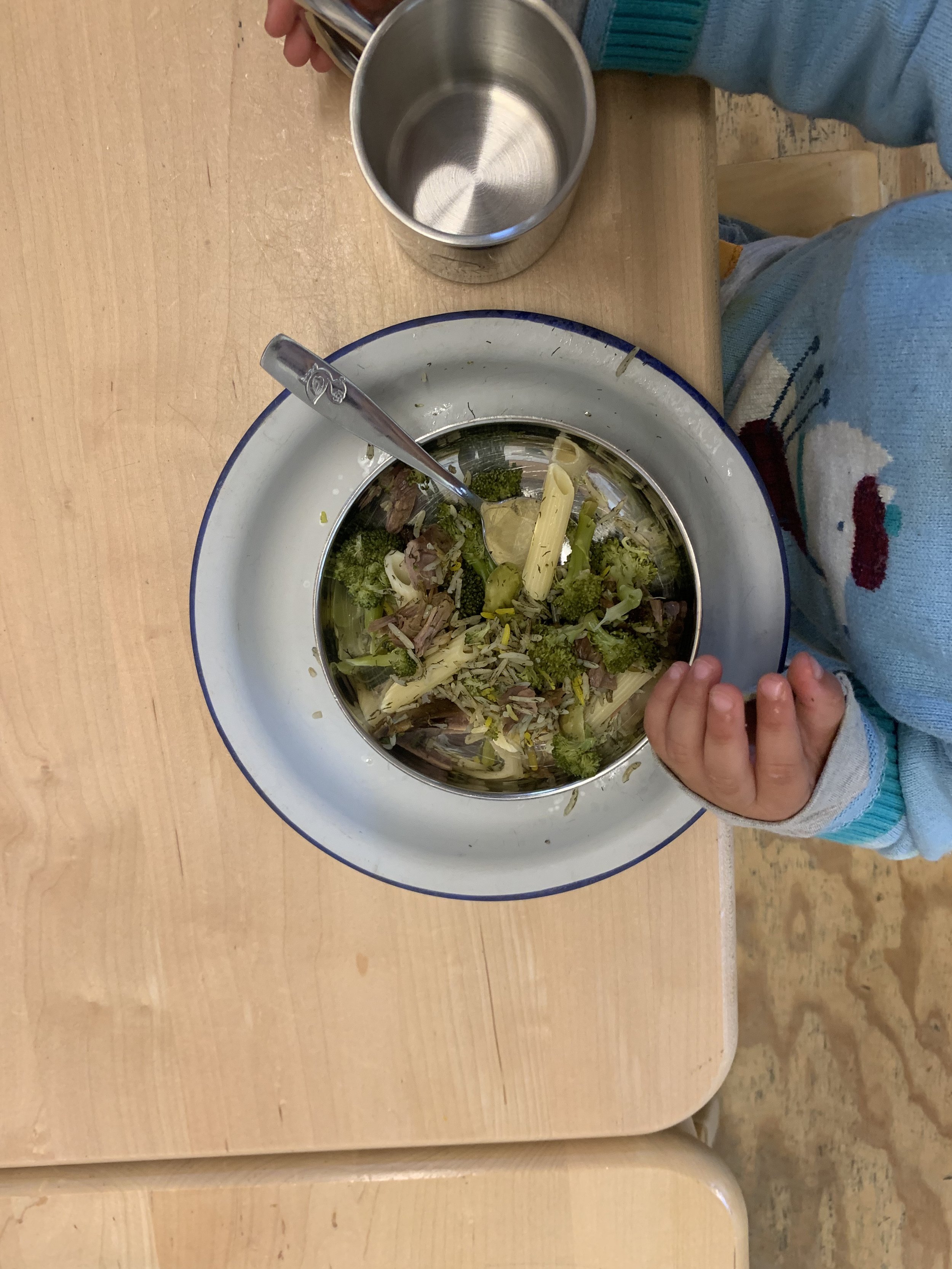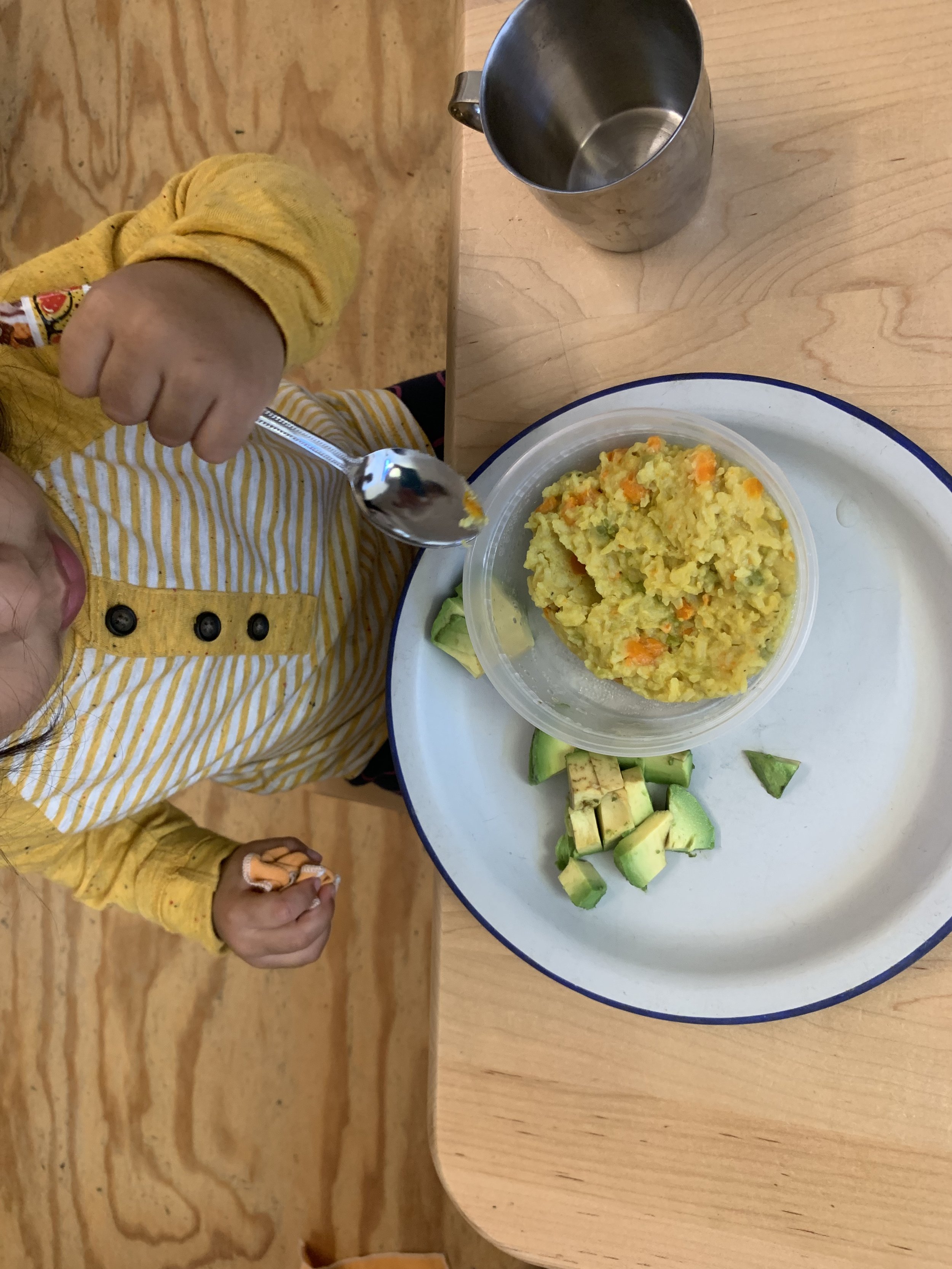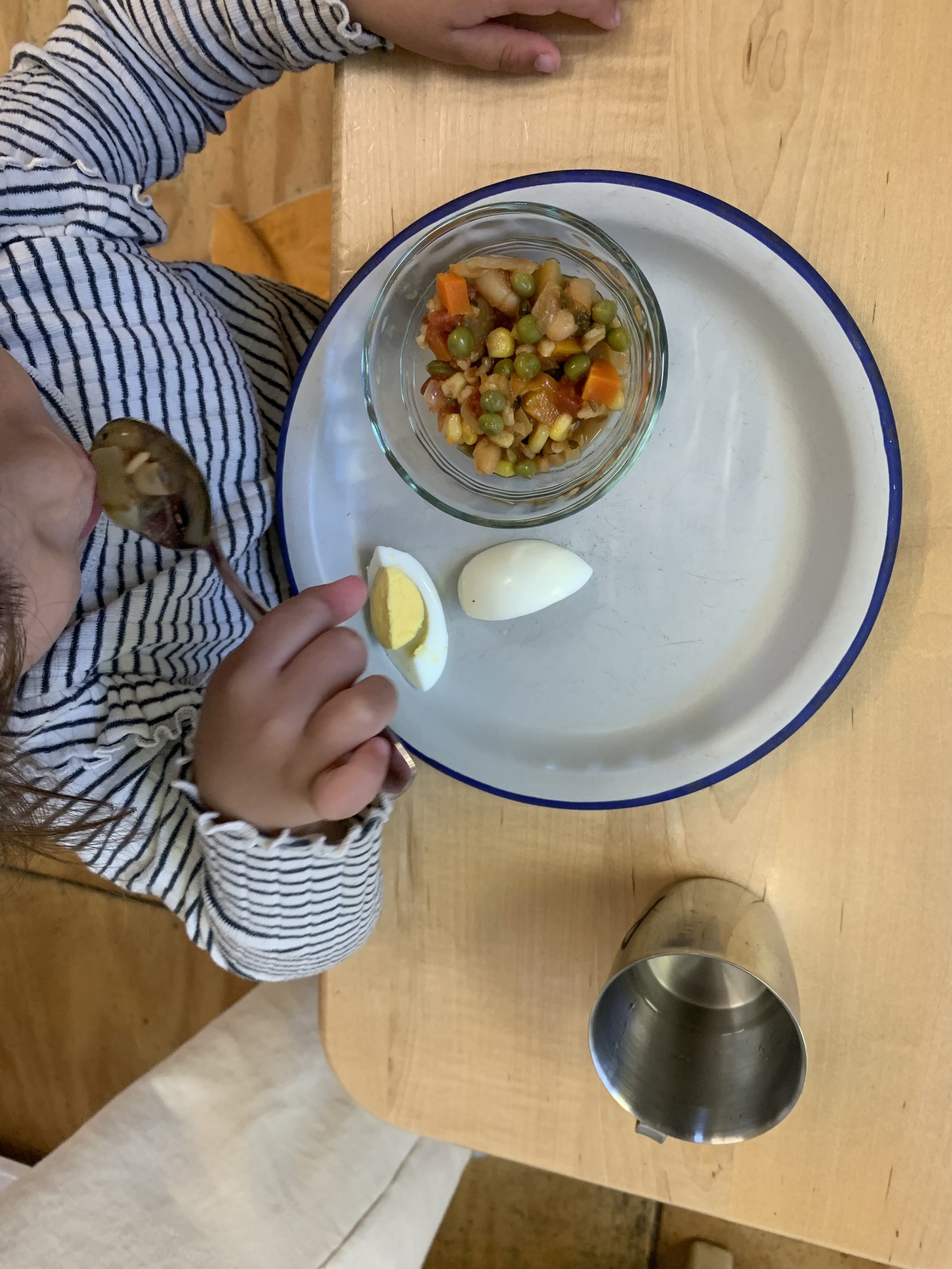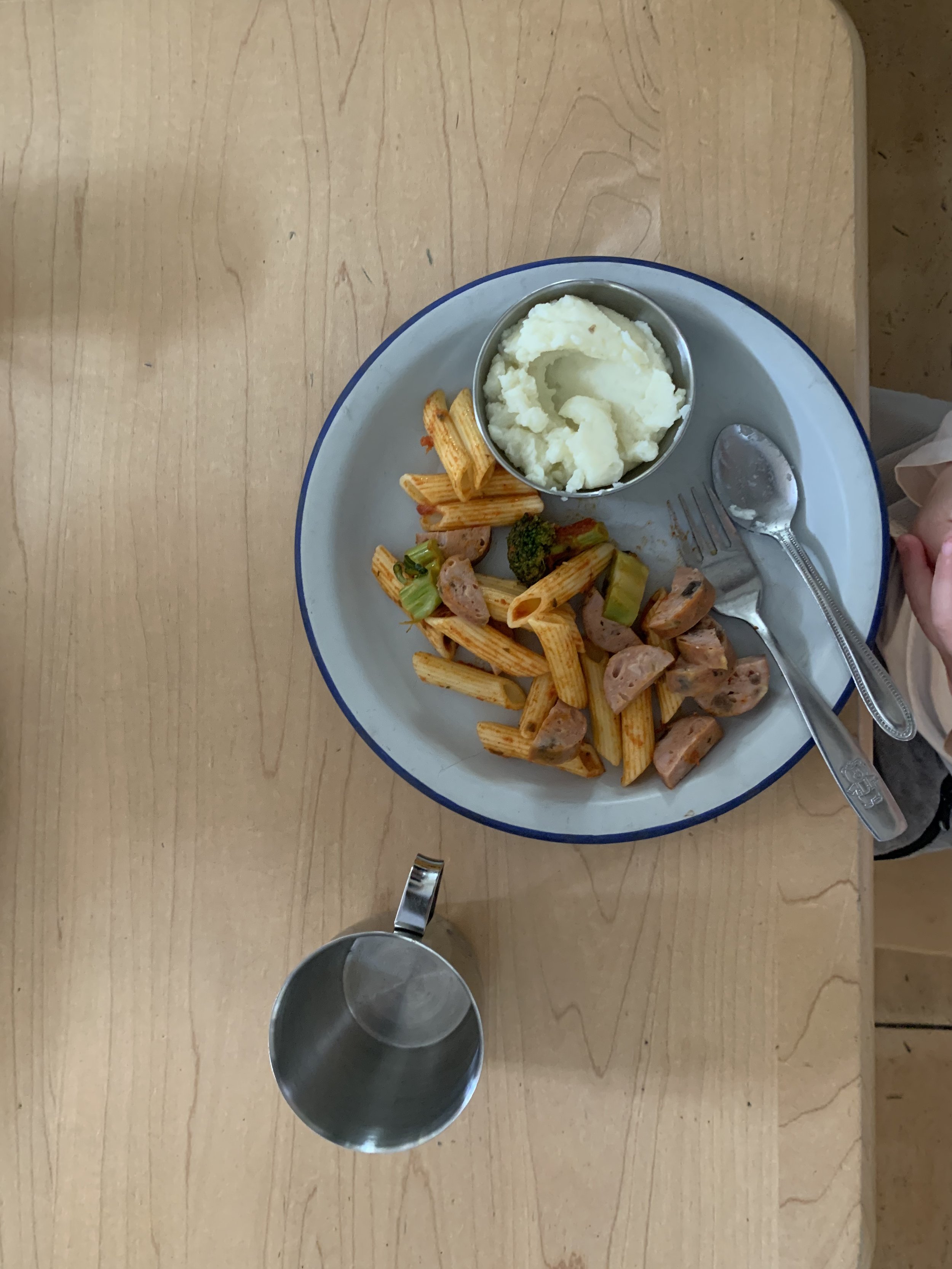Each day, the Nia House children sit down to a set table. Toddlers sing the same daily songs, light a candle, make silence and take grounding breaths. Children in the primary find the reusable metal cup with their name on it, put their napkins on their lap, eat, and chat with their friends. After eating, the toddlers clear their plates, silverware, cups and napkins, wash their face and prepare for nap. The primary children pack up their lunch box, clear silverware, cups, and napkin and ready for play time on the yard. During their outside time, members of the primary community put on aprons and scrub the lunch tables with soapy water. Lunch is a peaceful experience, as the children know what to expect.
A SNAPSHOT INTO TODAY’S LUNCHES (see actual pictures at end of blog):
edamame + tofu
avocado + grilled cheese
yogurt + strawberries
ravioli + zucchini
hummus & cheese sandwich + sliced fruit
pesto pasta
broccoli, yams + salmon
sliced carrots
rice + beans + quesadilla
Wondering what to pack for your child’s lunch?
goals
Color - Eat the rainbow.
Eating a diversity of colorful foods is a way to get the complete range of nutrients that a growing body and brain needs to thrive.
Crunch - Provide food with texture including fresh fruits and vegetables.
Foods with texture help children develop important oral motor and sensory skills.
Diversity- Introduce differences.
Nutrition habits begin now as children are in a sensitive period of developing taste preferences and rapid growth (physical, cognitive, social, emotional).Daily variety in lunch (even if slight changes) will keep lunch time interesting and compel healthy eating habits. We encourage children to eat a portion of each food group.
guidelines
Send something from each food group
(adjust to dietary needs- vegan/vegetarian): Fruits, Vegetables, Grains, Protein Foods, and Dairy
Do not send
no nuts, no sugar (including juice), no snack foods (crackers, chips, pretzels), limited salt.
lunch guidance
PROTEIN
Warm:
Soup or stew, heated and stored in an insulated container
Leftovers such as chicken, turkey, or casserole, in insulated container
Eggs, scrambled
Mixed cooked grains, heated (such as rice and beans)
Pasta (such as spaghetti, macaroni and cheese)
Cold:
Sandwich (egg, tuna, meat, cheese)
Eggs peeled, hard boiled
Yogurt with fruit
Cottage cheese
Finger food (cheese, etc.)
FRESH FRUIT
Half of an apple
Melon, berries, pineapple pieces
Half a banana
Seedless grapes
Peeled orange, etc.
Do not send fruit leather or dried fruit
VEGETABLES
Fresh carrot sticks, celery,bell pepper, cucumber (cut into thumb sized sticks)
Cooked peas, green beans, corn, etc.
Salad: greens, carrot, potato, egg, pasta, etc.
Problems with eating too much sugar or salt:
Causes tooth decay
Raises risks of diabetes and higher blood pressure
Can drain calcium from young children
Can contribute to high cholesterol
Can contribute to emotional distress, irritability, mood swings, difficulty concentrating, anxiety, hyperactivity, aggressive behavior, fear and insecurity
Salt can cause fluid retention and decrease of absorption of nutrients, weakening bones, nerves and muscles
Though some salt is needed in a healthy diet, Nia House is just trying to limit the EXCESS salt present in snack foods, most packaged or frozen food/meats, and fast food
Problems with eating too much fat:
Though the polyunsaturated fats in seafoods, avocados and vegetables are incredibly healthy for children, Nia House is trying to limit trans fats and hydrogenated oils in children’s diets. Examples are frozen foods, commercially baked foods, and fried foods.
Essential fatty acids are necessary for brain development and for energy, lowering cholesterol, insulating the body and more.
Trans fats found in fast foods and many prepared and packaged products can increase LDL (the bad type of cholesterol) and decrease HDL (the good type of cholesterol).
Trans fats have also been linked to an increase in cancer rates, and a general lower immune response.

